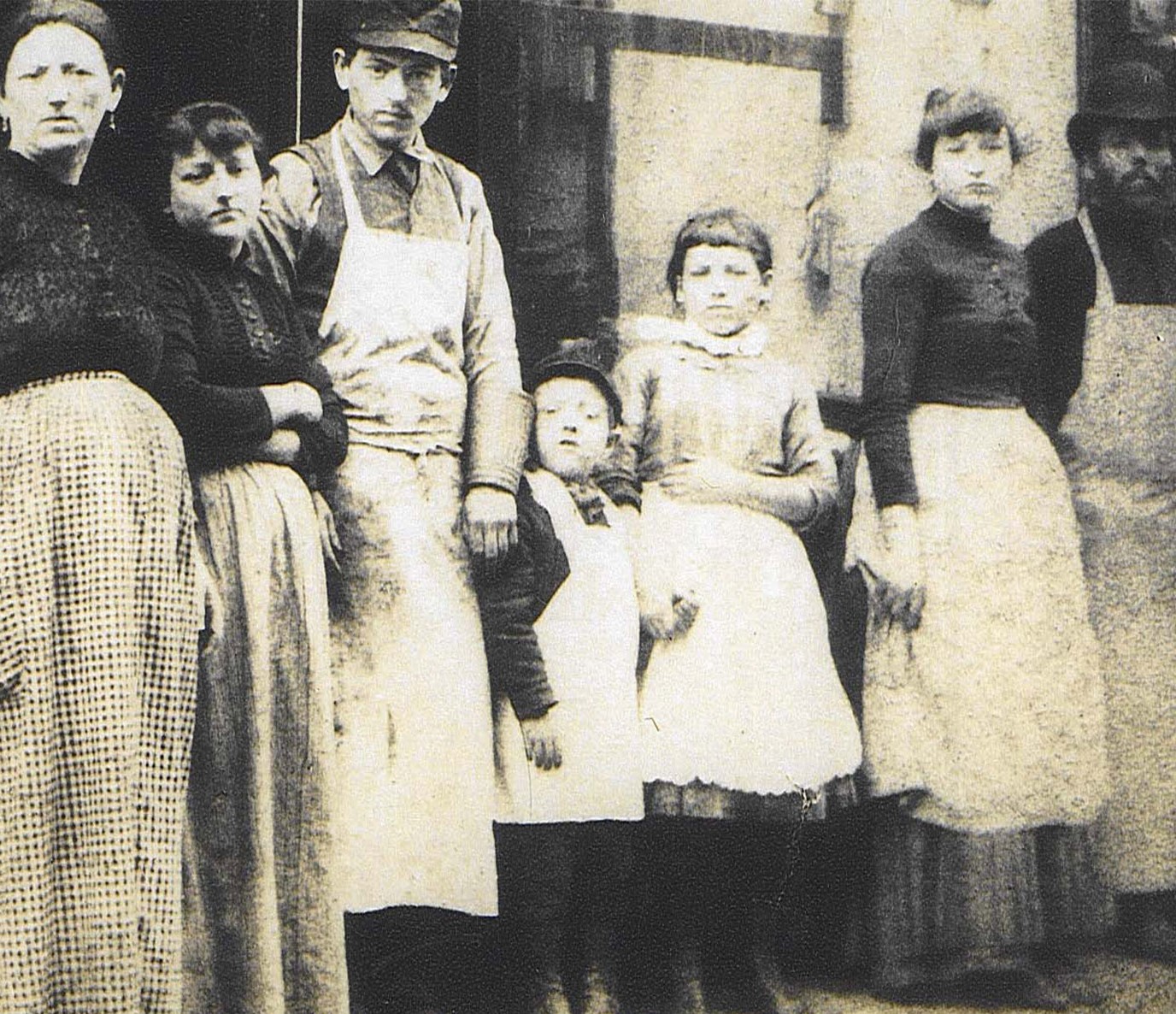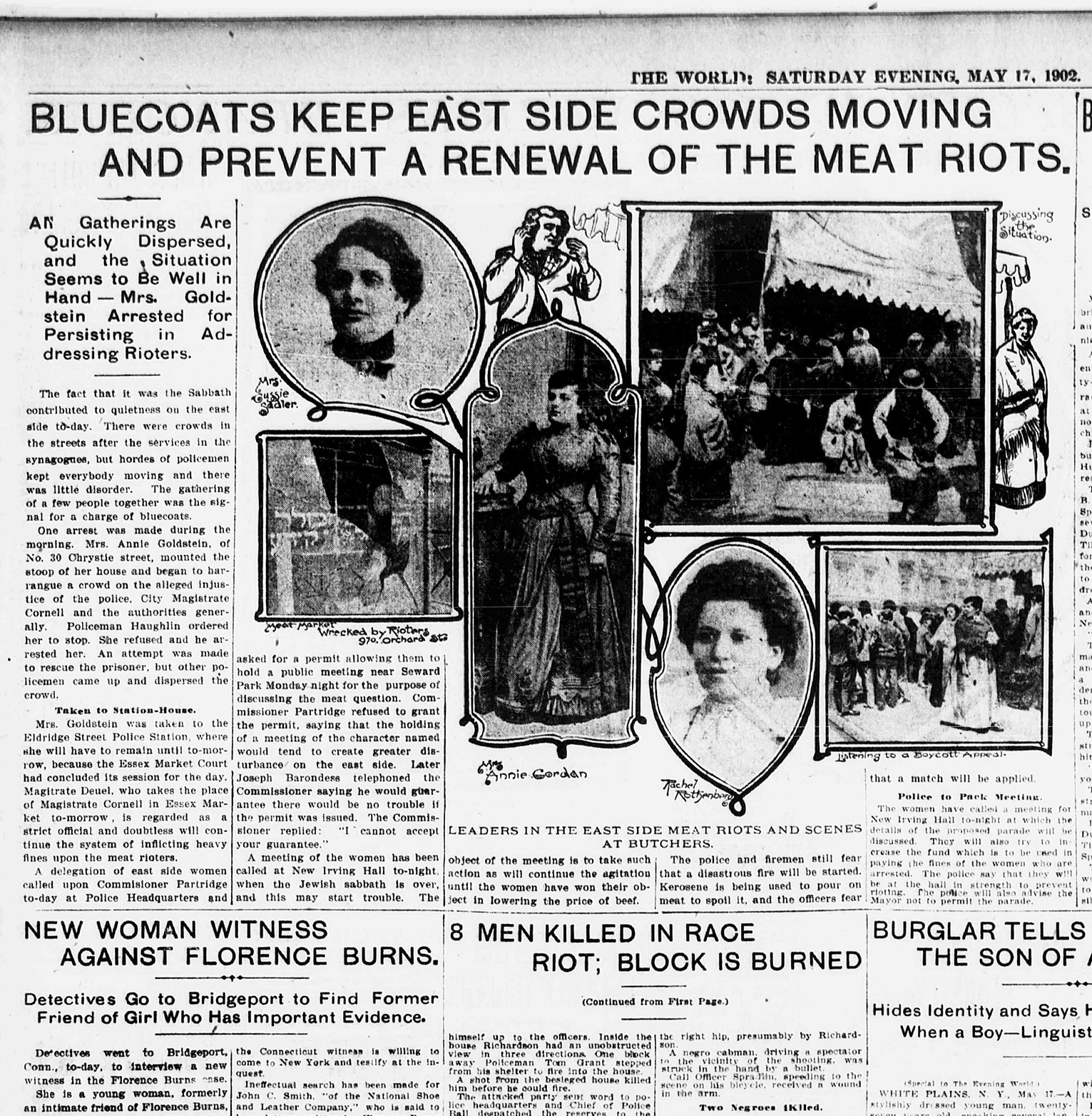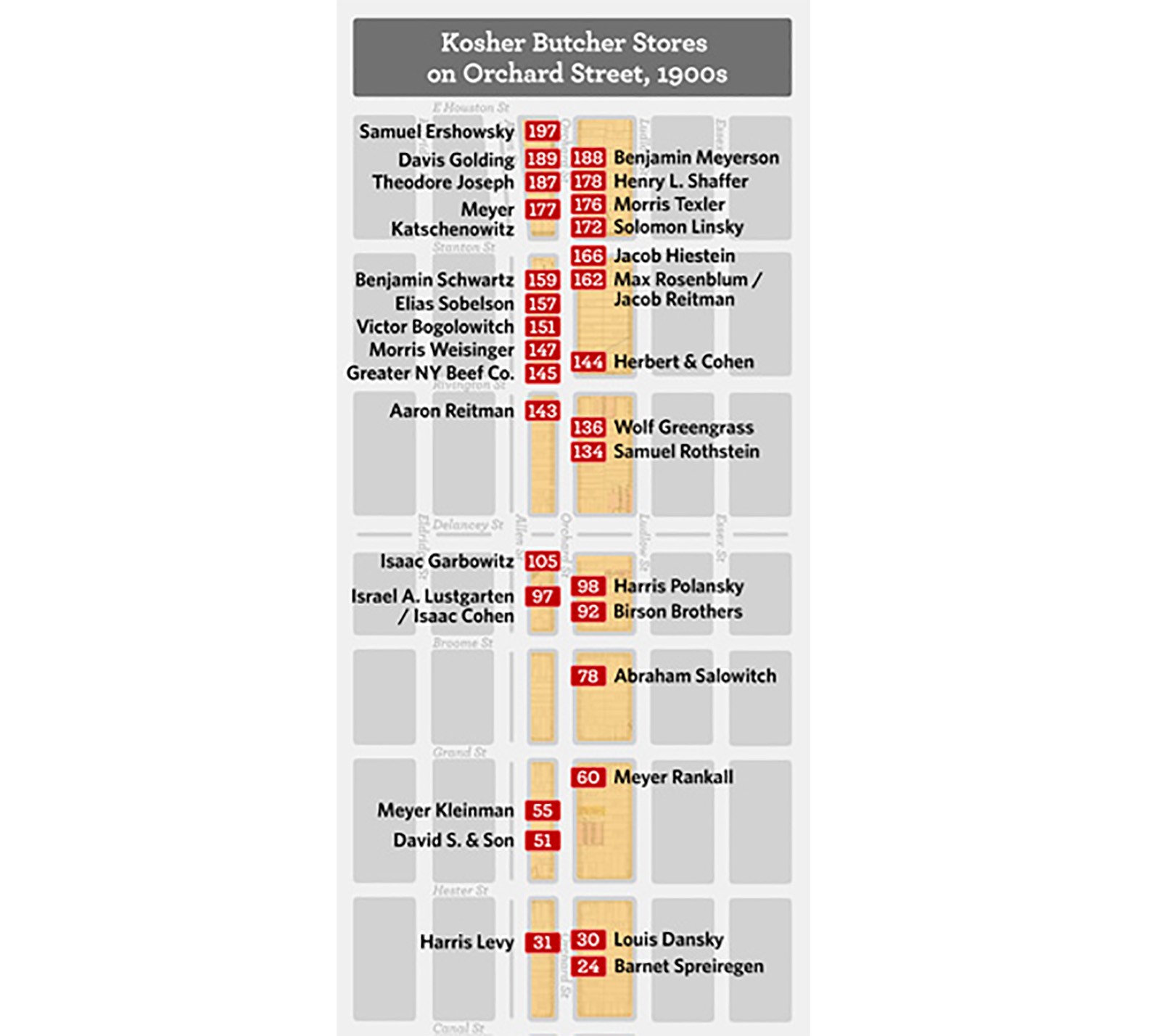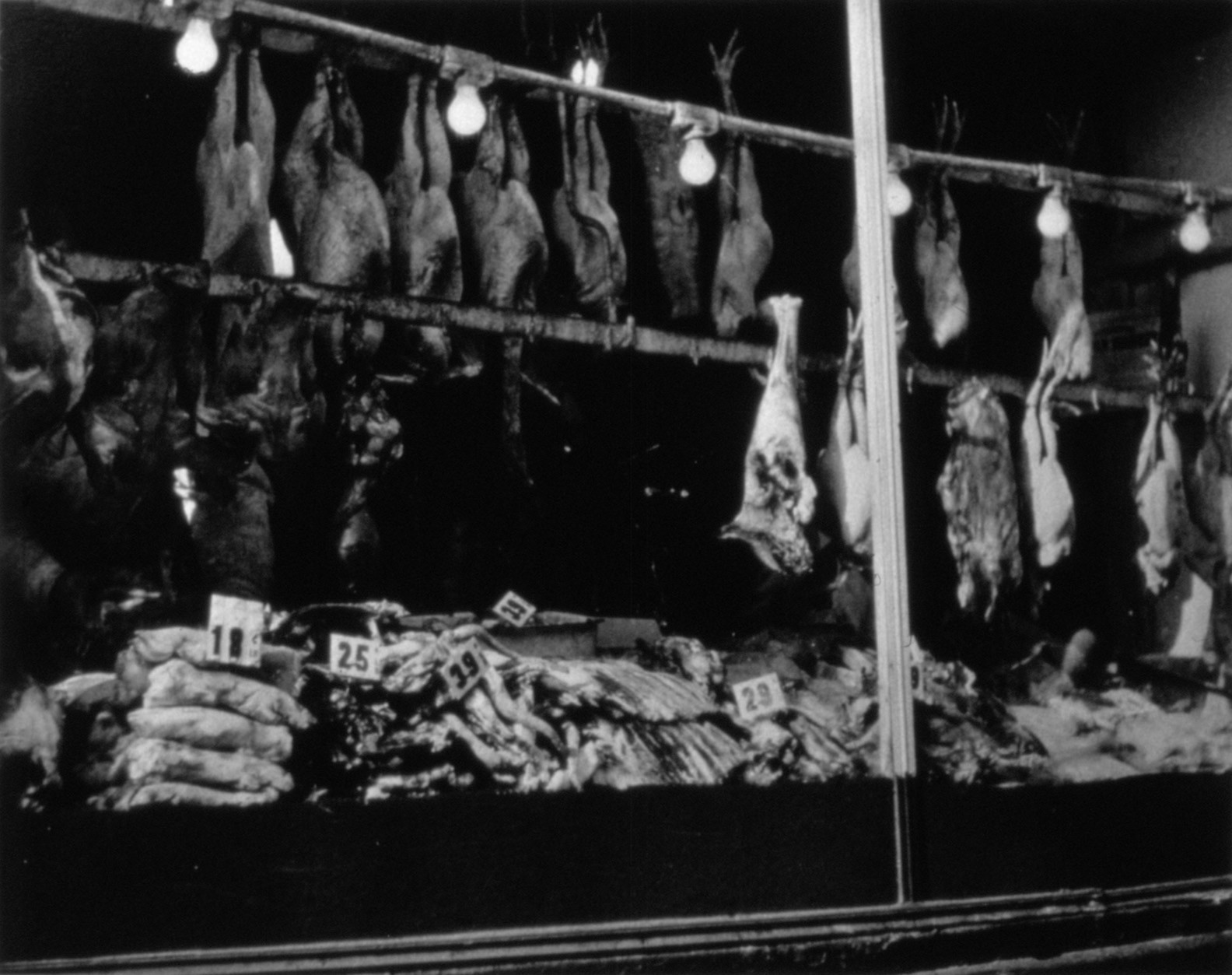At the turn of the twentieth century, East European Jewish immigrant “housewives” pushed gender-role boundaries to organize and challenge kosher meat retailers over a steep rise in prices. Literally fighting to feed their families, these women leveraged their role as homemakers to become a political force on the Lower East Side. Learn more about this story on our Tenement Women: 1902 building tour.
Homemaker Activists
Lower East Side Kosher Butchers

Pictured here, circa 1887, the Lustgartens’ pose in front of their kosher butcher shop at 97 Orchard Street. On Friday, May 16th, 1902 – just a few short years after the photo was taken, something like a brick shattered the front window of their shop. It was one volley in a protest against kosher butchers led by immigrant Jewish tenement women, sparked when the price of kosher meat skyrocketed 50%, from 12 to 18 cents a pound.

On the front Page of New York Evening World on May 16, 1902 an article on the Kosher Meat Boycott titled “Bluecoats Keep East Side Crowds Moving and Prevent a Renewal of the Meat Riots” featured a photo of the Lustgarten’s broken shop window at 97 Orchard Street.
Rising Meat Prices

That spring, a trust of meat wholesalers had raised prices, charging more to retail butchers like the Lustgartens. The butchers attempted to boycott the trust, but gave in within five days under the pressure to pay rent and, by some accounts, promises from the wholesalers to support the butchers’ fight to legally open on Sundays.
Organizing a Boycott
Tenement women were outraged. Faced with the steep increase, the women summoned the force of their role as accountants and managers of their households. Sara Edelson, a Lower East Side woman who owned a small eatery, rallied Jewish women in mass meetings with rousing words:

“Dear Sisters!
As we hold fast in our bitter struggle against the Beef Trust and against the Jewish butchers who are attacking us from all sides, we request that you, in the name of humanity, help us in our battle so that we can win.
We began this great struggle out of need, our sorrows drove us, despite the fact that we Jewish women are in principle, calm and quiet. The butchers have raised the prices of meat so high, that it is no longer possible for us to eat meat. We are out battling in a respectable/upstanding manner.”
The “Kosher Meat Riots”

Edelson’s rhetoric wasn’t enough to change prices. Women moved from words to action. In 1902, Orchard Street between Houston and Canal was home to 27 butcher shops, making it a target for protest. Women spread throughout the Lower East Side, pouring kerosene on cuts of meat and blocking entrances to the stores.
Scores of police were called to to quell the riots. Sara Edelson was reportedly the first person arrested. Nearly a hundred people, about 75 of them women, were hauled to court for disturbing the peace, receiving fines of $5 to $10.

One newspaper reported a conversation between a rioter, Rosa Peskin, and a judge:
Judge: “Did you throw meat on the street?”
Rosa Peskin: “Certainly, I should have looked it in the teeth?”
Judge: “What do you know of a trust? It’s no business of yours….”
Rose Peskin: “Whose business is it, then, that our pockets are empty?”
As they fought the price hike, boycotting women looked for inspiration in both the Jewish tradition and the American labor movement, using tactics, methods and vocabulary from labor organizing. By June of 1902, they drove the price back to fourteen cents a pound.
The price would later spike again. The boycott was only a temporary success. But in the long term, the boycott was a lasting signal of women’s political potential.